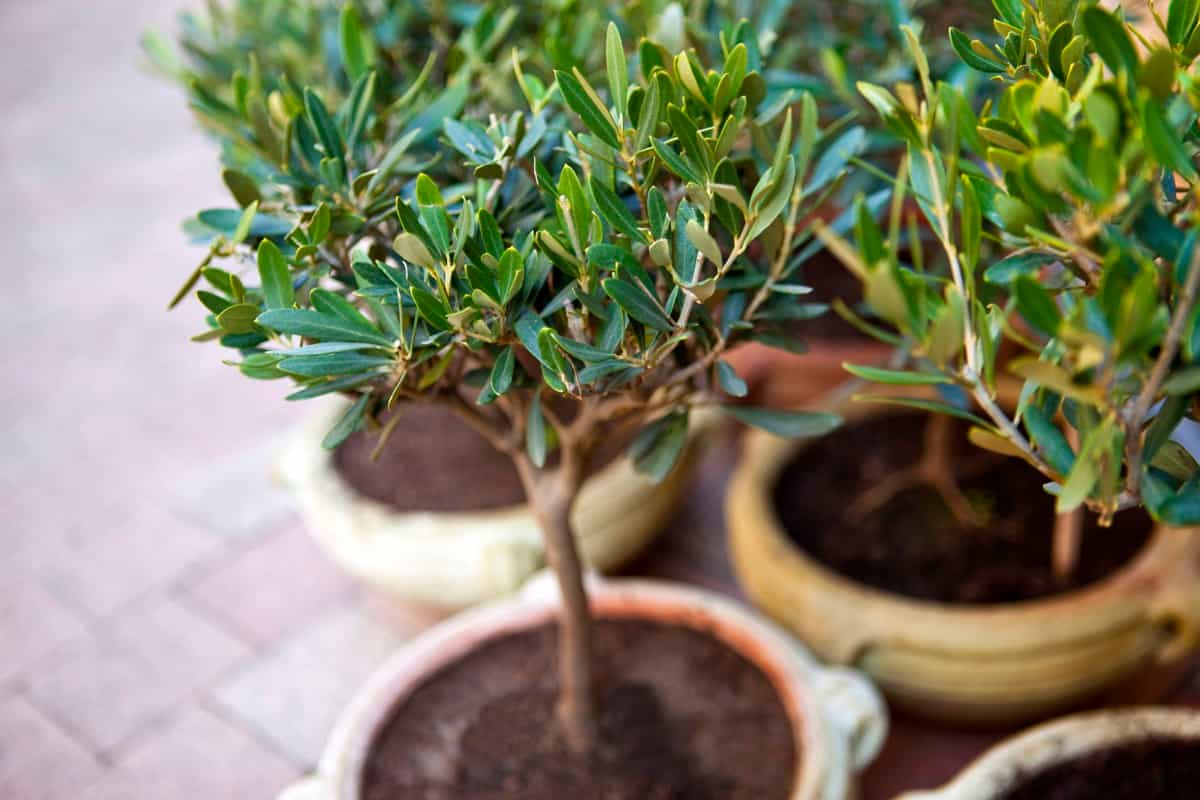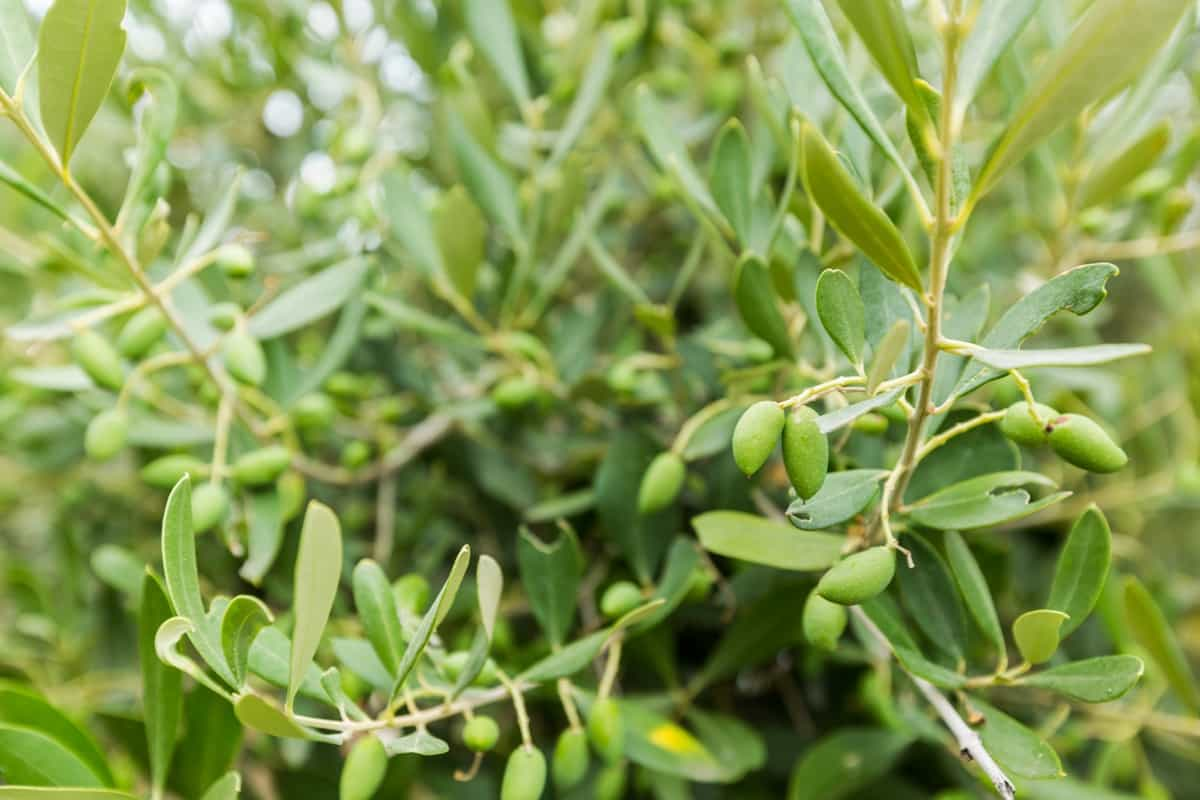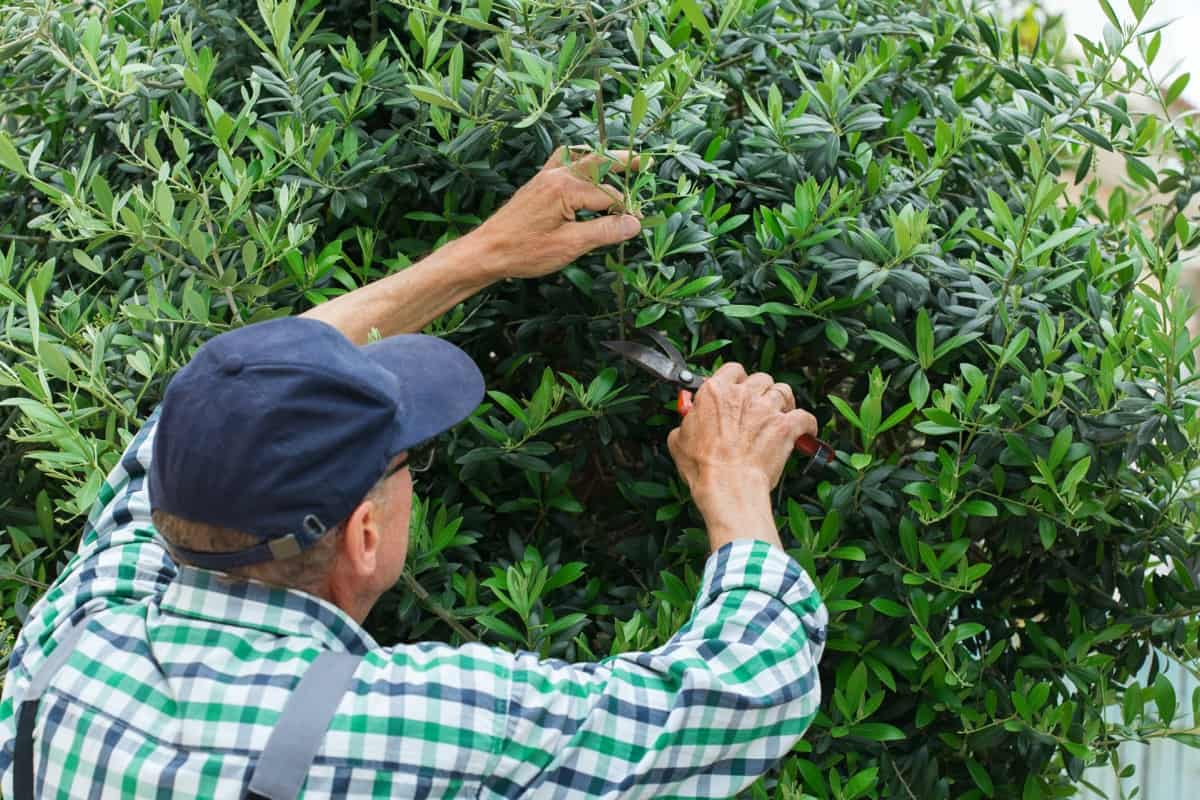Pruning olive trees in pots is essential for maintaining their health, promoting growth, and ensuring a bountiful harvest. This guide will discuss step-by-step instructions on how to prune olive trees growing in a pot, along with valuable insights on when to carry out this pruning process. Following these guidelines can keep your potted olive tree thriving and productive.

How to Prune Olive Tree in Pots
Understanding the Growth Habits of Olive Trees in Pots
Olive trees have a moderate growth rate, and various factors, including the variety, container size, and pruning techniques influence their size. In pots, olive trees tend to grow slower and smaller compared to those planted in the ground. The restricted root space limits their access to nutrients and water.
When selecting a pot for an olive tree, choose a container at least 20 inches in diameter to provide ample root space. Olive trees prefer well-draining soil, so a potting mix specifically formulated for container gardening is recommended. Regular watering is crucial, especially during the hot summer when olive trees are actively growing. However, overwatering should be avoided as it can cause root rot.
Selecting the Right Pruning Tools for Olive Tree Maintenance
A sharp pair of pruning shears is required for cutting small branches and twigs. Look for shears with a bypass design, as they provide cleaner cuts and minimize damage to the tree. For larger branches, a pruning saw is necessary. Choose a pruning saw with a curved blade for easier maneuverability. Additionally, a pair of loppers can be useful for cutting thicker branches. Ensure that the loppers have long handles for increased leverage. Lastly, invest in a sturdy pair of gloves to protect your hands while pruning.
Timing and Frequency of Pruning Olive Trees in Pots
The optimal time for pruning these trees falls between autumn and winter. During this period, the trees are in their dormant phase, which is ideal for pruning as it minimizes stress on the plant. Pruning olive trees in pots during this time allows for better control over their growth and shape. As for frequency, it is recommended to prune olive trees annually to maintain their health and productivity. Remove dead or diseased branches to stimulate new growth and improve tree structure.
In case you missed it: All About Black Olive Tree: Growing, Uses, Benefits, and Profile of Shady Lady Olive Tree

Removing Dead or Diseased Branches from Olive Trees in Pots
Removing dead or diseased branches from olive trees in pots is essential to maintain their health and promote growth. Start by inspecting the tree carefully, looking for any branches that appear brown, brittle, or withered. These are likely dead or diseased and should be pruned. Using sharp pruning shears, make clean cuts just above the branch collar, the swollen area where the branch meets the trunk. Be sure to sterilize your pruning tools before and after each cut to prevent the spread of disease. Removing these branches will enhance the tree’s appearance and prevent the spread of infection, ensuring its continued vitality.
Promoting Air Circulation and Sunlight Penetration through Pruning
By selectively removing excess branches and foliage, pruning allows for better air movement within the plant canopy, reducing the risk of fungal diseases and promoting overall plant health. Additionally, pruning helps to open up the canopy, allowing more sunlight to reach the lower parts of the plant. This encourages better photosynthesis and growth in shaded areas, producing more robust and productive plants. Regular pruning can significantly improve air circulation and sunlight penetration, leading to healthier and more vibrant plant growth.
Controlling the Size and Shape of Olive Trees in Pots through Pruning
Proper pruning techniques can control the size and shape of olive trees in pots. Pruning helps to maintain the desired size and shape of the tree, ensuring it remains suitable for a pot. Start by trimming any dead or diseased branches and cutting them back to where healthy growth begins. To control the tree’s height, prune the main stem to the desired height and encourage lateral branches to grow. Regularly trim back excessive growth and maintain a balanced shape. Remember to use clean, sharp tools and prune during the dormant to promote healthy growth.
Pruning Techniques for Encouraging Fruit Production in Olive Trees
There are several key approaches to consider when pruning olive trees. First, removing dead or diseased branches is crucial to promote healthier growth. Additionally, thinning out crowded branches allows for better air circulation and sunlight penetration, increasing fruit production. It is also important to prune branches growing vertically or crossing each other, as this can hinder fruit development. Lastly, pruning the tree to maintain its desired shape and size helps to optimize fruit production. By implementing these pruning techniques, olive tree owners can enhance fruit yield and overall tree health.
In case you missed it: How to Grow Dwarf Olive Tree: Size, Height, Price, Planting, and Care

Training Young Olive Trees in Pots through Pruning
Pruning helps to shape the tree, promote a strong structure, and encourage the production of healthy and abundant fruit. When pruning young olive trees in pots, it is important to remove any dead or diseased branches, as well as any crossing or crowded branches. This will allow for better air circulation and sunlight penetration, reducing disease risk. Additionally, pruning can help control the height and width of the tree, making it more manageable in a pot. Regular pruning sessions throughout the year will help maintain the health and productivity of young olive trees in pots.
Rejuvenating Neglected or Overgrown Olive Trees in Pots through Pruning
Rejuvenating neglected or overgrown olive trees in pots can be achieved through proper pruning techniques. Pruning helps to maintain the health and tree’s shape, as well as stimulate new growth. First, remove any dead or damaged branches and those crossing or rubbing against each other.
Next, thin out the canopy by selectively removing some interior branches to improve air circulation and sunlight penetration. Be sure also to prune back any excessively long branches to maintain a compact and manageable size. Regular pruning and appropriate watering and fertilizing will help revive and rejuvenate your olive tree, ensuring its continued growth and vitality.
Proper Aftercare and Maintenance Following Pruning of Olive Trees in Pots
After pruning, it is important to water the trees adequately, ensuring the soil is moist but not soggy. Applying a slow-release, balanced fertilizer can help provide essential nutrients to promote growth. Regularly inspect the trees for pests and diseases and take appropriate action if necessary. Providing sufficient sunlight is essential for the trees’ photosynthesis process. Additionally, it is advisable to periodically re-pot the olive trees to prevent root binding. Following these aftercare and maintenance practices, olive trees in pots can thrive and yield healthy fruits.
In case you missed it: How to Grow Olive Trees in Pots: Planting, Repotting, and Care

Conclusion
By following these pruning instructions, you can effectively prune your olive tree to promote healthy growth, enhance fruit production, and maintain an attractive form. Remember to adhere to the recommended pruning schedule and use the appropriate tools to ensure the best results.
- Feed Your Flock for Less: Top 10 Tips to Save on Chicken Feed
- Ultimate Guide to Ossabaw Island Hog: Breeding, Raising, Diet, and Care
- Hatching Answers: The Top 10 Reasons Your Chickens Aren’t Laying Eggs
- Eggs and Economics: Breaking Down the Cost of Raising Backyard Chickens
- Defend Your Greens: Proven Methods to Keep Iguanas Out of Your Garden
- Ultimate Guide to Cinnamon Queen Chicken: A Comprehensive Guide for Beginners
- Ultimate Guide to California Tan Chicken: Breeding, Raising, Diet, Egg-Production and Care
- Ultimate Guide to Marsh Daisy Chicken: Breeding, Raising, Diet, and Care
- 10 Types of Chicken Farming Businesses You Can Start for Profits